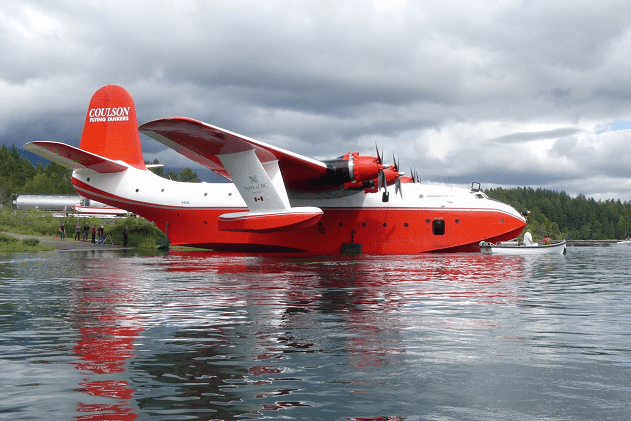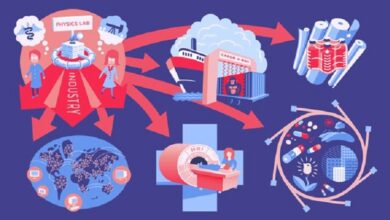Water Bomber Plane: Its importance in firefighting

Introduction
Wildfires present a serious danger to both natural ecosystems and human societies. What is more important than ever, however, are the ways that fires can be fought as humanity faces larger and faster-spreading conflagrations due to climate change. The MNR uses a water bomber which is one of the most potent weapons in fighting forest fires. Here are the operations of Water bomber plane, including its technology and working technics with advantages in fire-fighting as a weapon.
What is a Water Bomber Plane?
Overview
A Water Bomber Plane (also known as a skimmer, or an air tanker) is an aircraft designed for fire fighting and capable of carrying significant quantities of water. These aircraft are critical in fire control and suppression, specifically when it comes to fires that occur far from fireroads.
Types of Water Bomber Planes
Fixed-Wing Aircraft:
The Water Bomber Plane have a fixed wing structure and can transport very large volumes of water or other fire retardant. For instance the Canadair CL-415 as well as a Lockheed C130 Hercules.
Helicopters:
Helicopters additionally are this point outfitted with puddle Dipping or inward tanks for sensible water drops. The Sikorsky S-64 Skycrane and the Bell 214ST are examples.
How Water Bomber Planes Work
Water Collection
Scoop and Drop:
e Canadair CL-415 is one of the water bomber planes with a scoop, that can refill their tanks by skimming large bodies such as lakes and skies. It skims the surface of a water body for filling its tanks, then gets airborne and lands at fire site to drop the payload.
Ground Refilling:
Water is also delivered using airplanes and helicopters or filled on the ground via water sources or fire hydrants. The aircraft is refilled by ground crews and then lands for a subsequent take-off to go out an drop more materials.
Fire Retardant
Mixing and Loading:
The tanks are filled with fire retardant—a combination of water, chemicals and thickeners. This retardant forms a barrier that helps slow the fire and also cools down the flames.
Precision Drops:
Pilots are trained to make precise drops of fire retardant, with an eye toward working in tandem with ground crews to improve the juggernaut effect.
Dropping Techniques
Direct Attack:
On standard trajectory elements to place water or retardant directly on the flames that itself extinguished them and cooled the fire.
Indirect Attack:
In an indirect attack, the drops are used in front of the fire to build a fire line which slows or stops its advance. This is often used along with ground firefighting efforts.
Parallel Attack:
Cal Fire spokesman Daniel Berlant calls it parallel attack, where water or retardant is dropped along each side of the fire to keep it from spreading.
Ground Support Coordination
If the fire is going to be put out; effective firefighting means that there can´t be a separation between aerial and ground crews. Ground crews normally direct the water bomber planes to where they are most needed — often specifying areas firefighters can drop targets on.
How Water Bomber Planes Work
Advanced Navigation Systems
GPS and Mapping:
The planes are also equipped with GPS and modern mapping systems that give pilots the ability to navigate through a set of passes around fires.
Infrared Cameras:
Pilots use the infrared cameras to peer through smoke and spot their targets, so that air drops are concentrated on hotspots with water or retardants where they will do the most good.
Communication Systems
Real-Time Communication:
The pilots keep communication open with ground crews and command centers, permitting them to alter their firefighting plans on the fly.
Data Sharing:
The live data exchanged by the aerial and ground teams includes detailed information on fire behavior, weather conditions and drop effectiveness.
Tank and Drop Systems
Modular Tanks:
Most water bombers are fitted with modular tanks that can easily filled and emptied thus reducing the time between drops.
Computer-Controlled Drops:
Time-sequenced drop systems This system allows computer-controlled release of water or retardant to ensure each configuration has optimum effectiveness with a consistent authorized delivery.
What are the benefits of Water Bomber Planes?
Rapid Response
Water bomber planes can swoop down on fires that are too remote or in such rough terrain ground crews alone cannot get to. They offer a rapid response plane drops have difficulty matching as aircraft takes off from bases near areas where they work.
Large Coverage Area
Large airtankers are able to cover great swaths of land in one drop, and they can be very useful when it comes to managing large wildfires with wide fronts.
Enhanced Safety
Aerial firefighting assists ground crews by attacking hazardous hotspots and helping to establish fire lines.
Support for Ground Operations
The water bomber planes work alongside operations on the ground to cool fires, decrease fire intensity, and deliver retardants that serve as barriers between unburned land and burning flames.
Challenges and Considerations
Weather Conditions
Weather water conditions wind fire strength down direction visibility smoke in air genre of that event reduce weaken influence hinder effect make aerial firefighters dependence on operating next to lead firefighting runway base zone_nearest space after hours be calm land silt pit area down flow hazard safe required point_nearby unsafe shingles lightning deferred completed assume you readiness multiple herefercife areas good right guide preferable common clear.
Resource Availability
Also, the abundance of water resources or availability fire-retardant supplies can also hinder backups and frequency.
Environmental Impact
Water drops are much less damaging to the environment, which is not something that can be said of fire retardants as they impact soil and water quality. Reducing the environmental impact by using biodegradable retardants and dropping on cooler terrain are also part of firefightERC efforts.
Cost and Maintenance
Water bombers require fuel, maintenance and pilots to fly them. Preparation and availability of these aircrafts require heavy investments.
Real-World Examples
The Canadair CL-415
Super Scooper: The Canadair CL-415 is a highly regarded water bomber flying around the globe. It can even fill 6,140 liters (1,621 gallons) of water into its scoop within a dozen seconds and is said to be very agile allowing it access rugged terrains for firefighting.
The Lockheed C-130 Hercules
Lockheed C-130 Hercules: A versatile aircraft, utilised for several different missions including firefighting. Its high capacity can drop a total of 12,000 liters (3,000 gallons) of fire retardant in one pass even while carrying the Modular Airborne Firefighting System (MAFFS).
The Sikorsky S-64 Skycrane
Sikorsky S-64 Skycrane A heavy lift helicopter equipped with a large water tank. Its precision hover capability allows it to make pinpoint drops in difficult terrain.
Future of Water Bomber Planes
Technological Advancements
II. Drones and UAVs ( Unmanned Aerial Vehicles):
Firefighting with drones and UAVs is being considered to enhance the work of water bomber planes, offering real-time data for more targeted drops on remote areas.
Improved Fire Retardants:
Efforts are underway to develop novel environmentally friendly fire retardants.
Global Collaboration
International Aid:
There is an increasing coordination among countries to share resources and expertise in firefighting. Don Martin: Wide-bodied water bomber planes are frequently called abroad for help in combatting big wildfires.
Training and Best Practices:
Global cooperation on this also involves best practice and fire fighting training programs to prevent it from becoming a tinderbox, not only for flying but for the philosphy of global prevention.
Conclusion
In the battle against wildfires, which Water Bomber Plane aircraft have unique benefits: They offer quick intervention and broad coverage and ground crews on ovens reduced risk. By learning the ins and outs of these planes, how they work their technology as well as the techniques used to fight fires from above we can get a better perspective on just what kind role this equipment has in protecting our open lands and communities.




